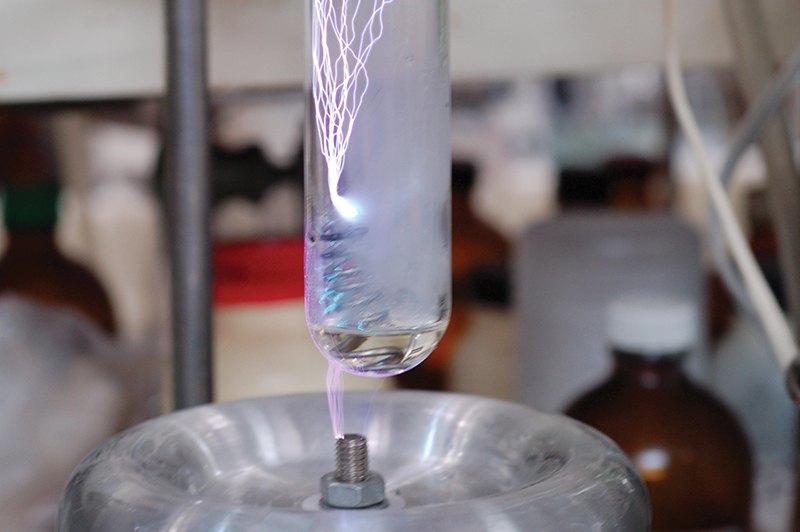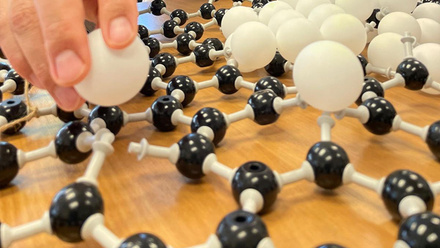Bright spark for polymer synthesis
Radical polymerisation is boosted by using remote spark discharge from a Tesla coil, without needing conventional catalysts or polymerisation initiators.

Researchers at the University of Tsukuba in Japan say they can synthesise high-purity polystyrene and polymethyl methacrylate (acrylate) for use in a range of products by applying their method to generate monomer radicals. These radicals then act as the polymerisation initiators.
Associate Professor Hiromasa Goto explains that direct polymerisation is usually achieved by applying radiation, which generates radicals in the monomer. However, the radioactivity restricts the application of this method.
Alternatively, polymers can be synthesised using irradiation from a plasma generator under high vacuum. However, the reaction mechanism is unknown, so the resulting polymer cannot be processed because it is both insoluble and infusible. Secondly, the generator’s large size restricts its use.
In contrast, the remote spark discharge method being used here could be easily set up for polymerisation, Goto proposes.
Whereas normal high-voltage generators create sparks between two electrodes, Tesla coils can generate high-voltage discharges without a counter electrode, he explains. This means the spark discharge treatment can be conducted externally to the reaction vessel.
'Small Tesla coils are now available at low cost, it does not require a counter electrode and produces a one-way discharge towards an object,' he explains.
A chemical reaction occurs when a flask containing a monomer is placed on the Tesla coil, which discharges a short spark at the object from outside the reaction vessel that only lasts a few minutes. This one-way discharge acts as the trigger for the polymerisation process.
Another advantage is, with two electrodes, usually, the distance between them must be long enough to fit a flask – a longer distance then requires a much high voltage.
'A small Tesla coil produces sparks about 20cm in the air,' Goto says. 'The polymerisation reaction can be carried out easily since all that is required is to place a flask there.'
In a further development, Goto says the research has also successfully applied a similar spark discharge treatment to conjugated polymers using solitons – a short-wave burst found in water waves and electrical signals – to initiate polymerisation.
'Solitons are generated in polyacetylene as the part responsible for electrical conduction,' he explains. 'We have found that spark discharges generate neutral solitons, which are only radicals in the polyacetylene.'
Goto notes how the soliton radical attacks the double bond of styrene as a monomer and this opens the double bond with the radical.
'The radical in the monomer reacts with other monomer molecules [and] this chain reaction produces macromolecules of a long size,' he says.
According to the researchers, using these conductive polymers as electrical carriers for radical polymerisation has not been previously reported. This discovery therefore opens new avenues for material synthesis using electromagnetic waves.
'Weak electromagnetic waves, which are not high-energy like radiation, but are abundant in our environment, can be used as a power source to drive electronic devices,' says Goto.
'We are trying to use electromagnetic waves for chemical reactions. Instead of using thermal or radiation energy, we use spark discharges to create new polymer reactions. Recently, it has been proposed that lightning can also produce trace amounts of anti-matter by generating gamma rays.
'There are still many unknowns about spark discharges, and there is the possibility of physical and chemical phenomena that have never been seen before.'







